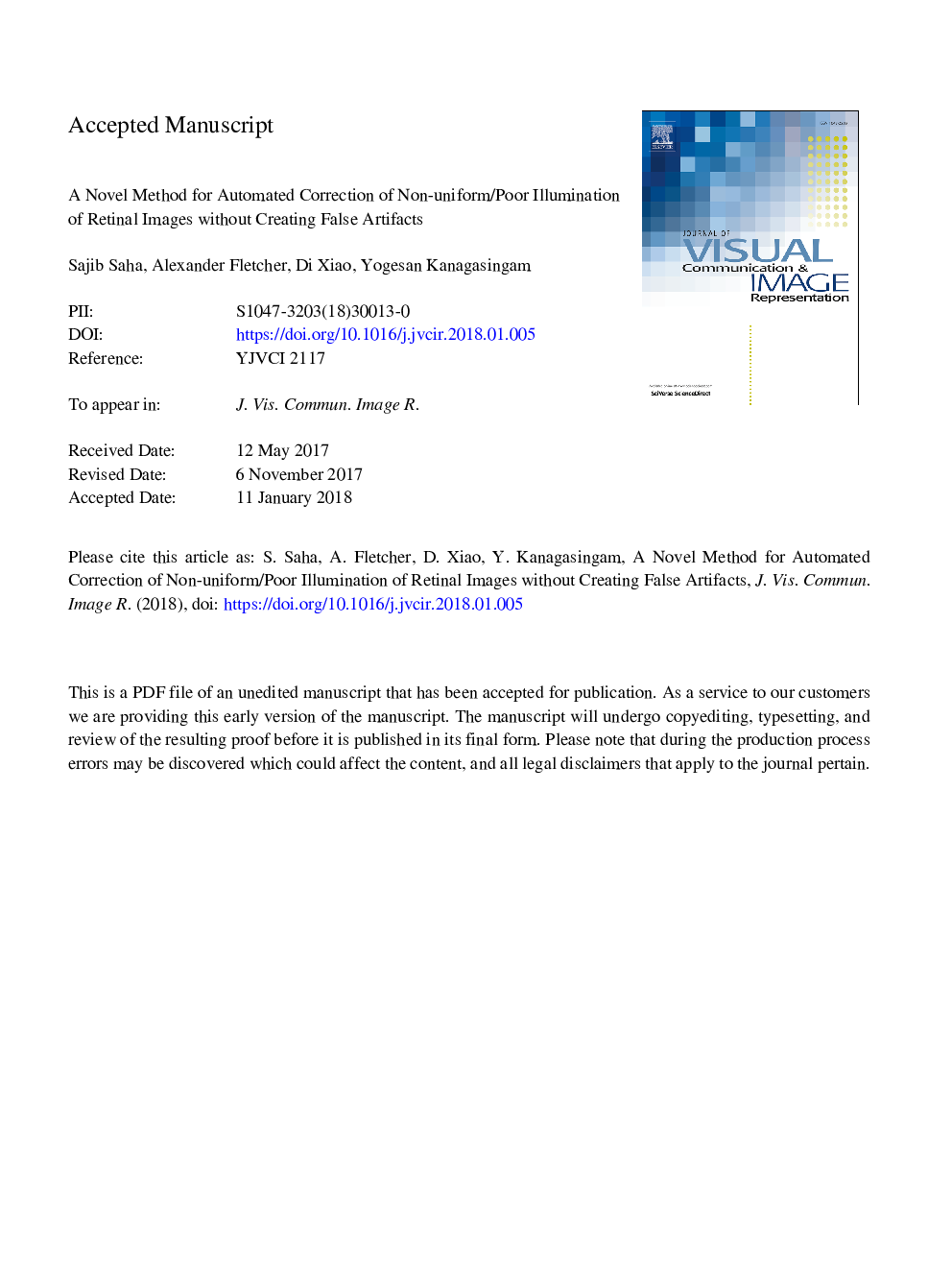| Article ID | Journal | Published Year | Pages | File Type |
|---|---|---|---|---|
| 6938311 | Journal of Visual Communication and Image Representation | 2018 | 22 Pages |
Abstract
Retinal images are frequently corrupted by unwanted variations in the brightness that occur due to over-all imperfections in the image acquisition process. This inhomogeneous illumination across the retina can limit the pathological information that can be gained from the image; and can lead to serious difficulties when performing image processing tasks that requires qualitative as well as quantitative analysis of feature presence on the image. On that perspective we have proposed a novel two-step approach for non-uniform and/or poor illumination correction in the context of retinal imaging. A subjective experiment was conducted to ensure that the proposed method did not create visually noticeable false color or artifacts on the images, especially on the areas that did not suffer non-uniform/poor illumination prior to correction. An objective experiment on 25,872 retinal images was performed to justify the significance of the proposed method for automated pathology detection/classification.
Related Topics
Physical Sciences and Engineering
Computer Science
Computer Vision and Pattern Recognition
Authors
Sajib Saha, Alexander Fletcher, Di Xiao, Yogesan Kanagasingam,
